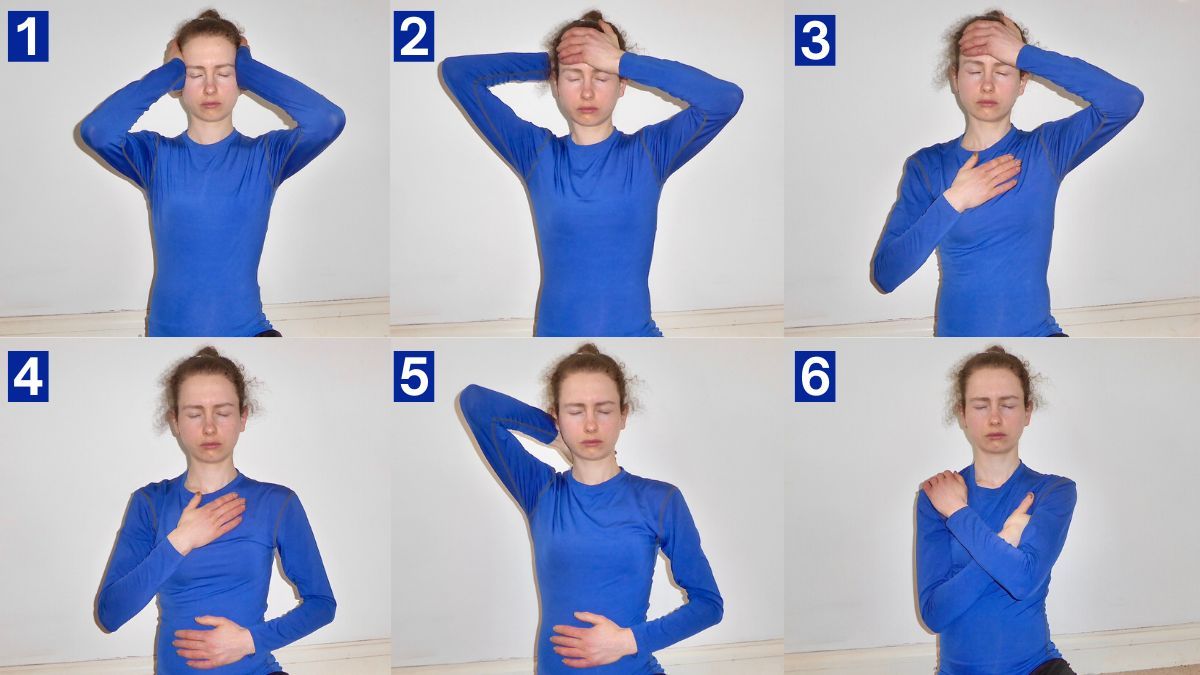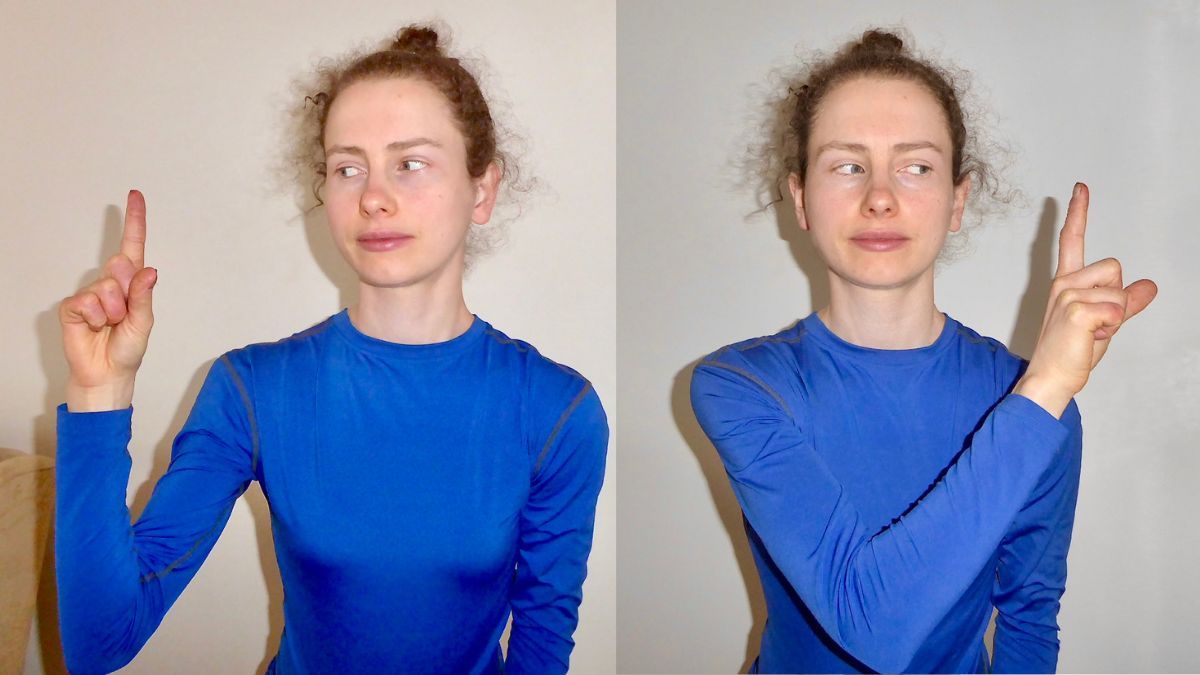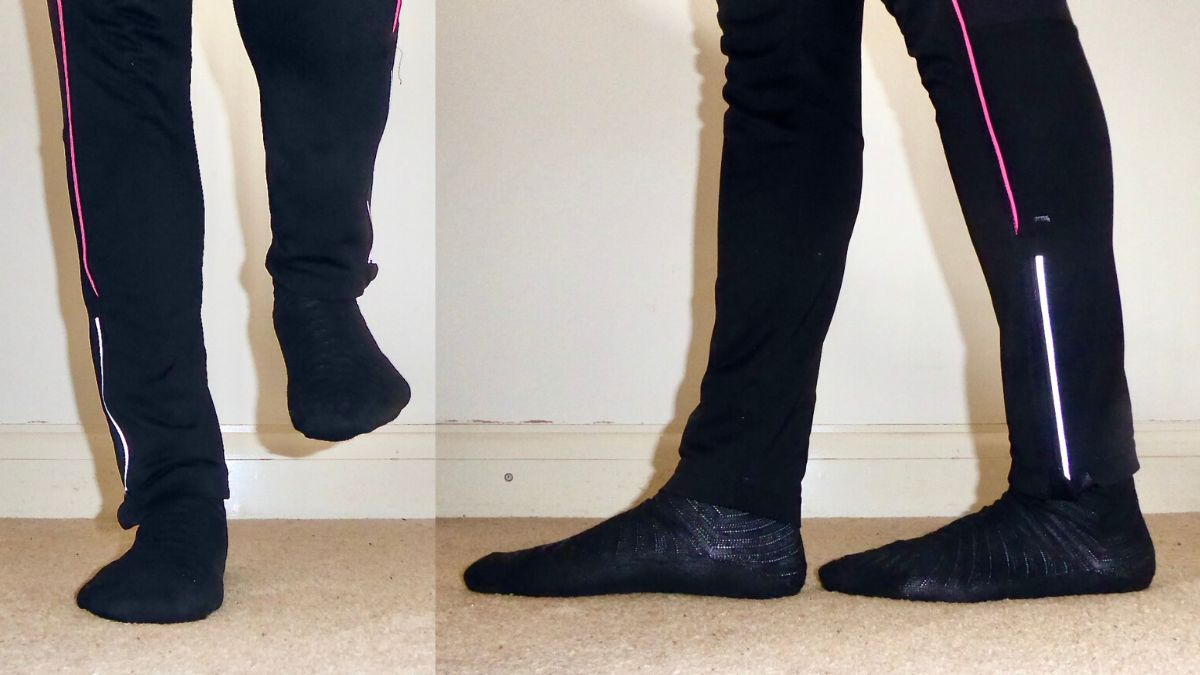Resetting the nervous system calms the whole body and mind, can help provide relief when experiencing uncomfortable symptoms and emotions and is associated with improved energy, digestion, sleep, relaxation and mood and reduced fatigue, pain, anxiety and stress. Below are 10 easy ways to reset your nervous system.
Disclaimer: This post is intended for informational purposes only. I’m not a qualified practitioner and I’m not encouraging anyone else to these things. Please consult a qualified practitioner if you have any concerns regarding your health and before making any changes to your current diet or treatment plan. This post contains affiliate links, meaning at no additional cost to your I will earn commission if you click on a link and make a purchase. As an Amazon Associate, I earn from qualifying purchases. See my full disclaimer here.
Jump To Section:-
- What is the nervous system?
- Nervous system dysregulation causes
- Dysregulated nervous system symptoms
- How to calm the nervous system – 10 ways
- Other health and wellness posts
What is the nervous system?
The autonomic nervous system controls the function of all our major organs (heart, lungs, stomach etc) and everything that happens without us consciously thinking about it including (1):-
- Heart rate,
- Blood pressure,
- Breathing,
- Body temperature,
- Digestion.
It is composed of 2 parts (1):-
- Sympathetic nervous system (fight or flight response), which is activated in response to any stress or threat and provides the body with energy to protect us from danger, such as running from a lion. When activated levels of our stress hormones like cortisol increases, blood flow is directed away from our immune system, digestive system and reproductive systems, decreasing their functions, and instead flows to our muscles to allow us to move quicker, our breathing and heart rate increases, muscles tense up and shoulders round and our pupils dilate to allow us to see better. All of this happens to prepare us to take flight and flee from potential dangers and threats.
- Parasympathetic nervous system. This is our rest & digest state, which is the natural state our body should be in to heal, rest, recharge, absorb nutrients from our food and become stronger. When activated it relaxes our whole body by slowing our heart and breathing rate, increasing blood flow to our digestive and reproductive systems, optimising their function, balancing our hormones, easing muscle tension and allowing us to think more rationally.
| Body Part/ Function | Sympathetic Nervous System | Parasympathetic Nervous System |
|---|---|---|
| Eyes | Pupils dilate | Pupils constrict |
| Saliva | Reduced saliva production | Increased saliva production |
| Heart | Heart rate increases | Heart rate slows |
| Lungs | Constricts airways | Relaxes airways |
| Breathing | Faster shallower breathing | Slower deeper breathing |
| Gallbladder | Inhibits release of bile to digest fats from food and remove toxins | Stimulates release of bile to digest fats from food and remove toxins |
| Stomach | Reduced digestive enzyme production | Increased digestive enzyme production |
| Liver | Stimulates release of glucose, increasing blood sugar levels | Inhibits release of glucose, keeping blood sugar levels stable |
| Muscles | Increased muscle tension | Relaxes muscles |
| Immune System | Reduced immunity – higher risk of and more frequent infections | Strengthened immunity – lower risk of and fewer infections |
| Hormones | Increased release of stress hormone like cortisol | Increased release of happy hormones like endorphins and oxytocin |
A healthy regulating nervous system should be able to move easily between these 2 states, with our sympathetic system activated to protect us and help us deal well with short term threats and stresses and then returning to our parasympathetic healing and relaxation state after the threat and stress is over (2).
Nervous System Dysregulation Causes
However, the following everyday stressors can cause our sympathetic nervous system to be switched on regularly for extended periods of time and become dominant (3, 11):-
- Work commitments,
- Over stimulation from screens,
- Stress,
- Poor sleep,
- Poor diet,
- Family commitments,
- Relationship difficulties,
- Health concerns,
- Financial worries,
- Over exercising,
- Caffeine consumption,
- Being constantly on the go without enough down time and rest.
Dysregulated Nervous System Symptoms
The sympathetic nervous system being dominant suppresses our immune system. It negatively affects our physical, mental and emotional health and can contribute and cause numerous symptoms, including (1, 4, 5, 6, 7, 8, 9):-
- Muscle tension, especially around the neck and shoulders,
- Increased pain and inflammation,
- Increased heart rate,
- Constant fatigue – feeling tired but wired,
- Elevated blood sugar & blood pressure,
- Impaired digestion and digestive issues like nausea, bloating, gas, diarrhoea and constipation,
- Poor sleep and insomnia,
- Feeling tired during the day but wide awake at night,
- Increased anxiety, stress and depression,
- Panic attacks,
- Headaches, migraines & dizziness etc.,
- Frequent infections,
- Hormone imbalances,
- Increased irritability,
- Difficulty focussing and remembering things,
- Unable to think rationally,
- Unexplained symptoms and sensations.
How To Calm The Nervous System – 10 Ways
There are simple things we can do to calm and reset our nervous system, switch off our stress response and place our body back in the parasympathetic rest and digest state. Below are 10 things that can be implemented to achieve this. Resetting the nervous system alongside performing the other 14 exercises to activate the vagus nerve as detailed in my other How To Activate Parasympathetic Nervous System post, can help provide long term relief from chronic symptoms, improving physical, mental and emotional health by easing fatigue, pain and anxiety and improving energy, immunity, digestion, sleep and mood (1, 5, 6, 7, 8, 9, 10). It also allows us to move through difficult challenges, emotions and stresses easier, think through things more rationally and return to the parasympathetic rest and digest state once stresses have passed (12).
1). Touch
Touch brings our mind and body back into the present moment and signals to our nervous system that we are safe (13). It helps rewire the brain by interrupting the activity in the amydgala to switch off the stress response and reducing any negative emotions associated with uncomfortable symptoms, sensations, emotions and stressful events, like sadness, anxiety and fear, while activating our parasympathetic nervous system and increasing the release of happy hormones like serotonin and oxytocin to increase calmness, relaxation and happiness (14). The following exercises utilise touch to achieve these benefits:-
- Tapping. Patting increases blood flow and activates our parasympathetic nervous system. Gently tap the whole body, slowly working your way down from the top of your head, down your neck, face, arms, chest, stomach, thighs, lower legs and feet.
- Massage your feet.
- Self Holding Exercise:-
- Sit comfortably with your eyes closed or open.
- Place your hands on the left & right side of your head. Focus on the area between your two hands and notice any sensations. Observe any sensations like you’re watching the TV – without judgement, fear or trying to alter them. Maintain until you feel a change – you yawn, sigh or swallow, find your breathing and heart rate become slower or you feel calmer and more relaxed.
- Repeat with 1 hand on your forehead & 1 hand on the back of your head.
- Repeat with 1 hand on your forehead & 1 hand on your heart.
- Repeat with 1 hand on your heart & 1 hand on your stomach.
- Repeat with 1 hand on your stomach & 1 hand on the back of your neck.
- Repeat with 1 hand under your opposite armpit holding the side of your chest & 1 hand on your opposite shoulder.

Below is a video demonstration of how to perform the Self Holding Exercise:-
2). Bilateral Stimulation Exercises
When our sympathetic nervous system is dominant the prefrontal cortex of our brain, which helps us think more clearly and regulates our emotions, is switched off (15). Bilateral stimulation stimulates both hemispheres of the brain and switches back on the prefrontal cortex, which has been shown to increase parasympathetic nervous system activation and promote wellbeing by easing anxiety and stress and boosting mood (16, 17).
Bilateral stimulation exercises include:-
- Holding a finger up at eye level and slowly moving it to the left and right tracking it with your eyes while keeping your head facing forwards.

- Butterfly hug – interlock your thumbs, cross your hands and place them on your chest beneath your collarbone. Alternately tap your left and right hands on your chest in a slow rhythm while breathing slowly and deeply.

Continue with the exercises until you feel a shift – you feel more relaxed, calmer, swallow, sigh, yawn, feel your heart and breathing rate slow, take a deeper breath, or any uncomfortable sensations, emotions and symptoms have eased.
3). Rocking
The rhythmic motion of rocking soothes our nervous system by increasing the release of endorphins, one of our happy hormones, which switches off our sympathetic nervous system and activates our parasympathetic nervous system (18). Rocking can be achieved in the following ways:-
- Gently swaying from side to side,
- Going on a swing,
- Sitting on a rocking chair.
4). Weighted Exercises
Weighted exercises enhances body awareness, by bringing us back into the present moment by helping our body understand where it is in the space around us. It soothes the nervous system by sending it a signal to let it know we’re safe, which has been shown to help ease pain, anxiety, stress, depression and fatigue and improve productivity and sleep (19, 20). The following are examples of weighted exercises:-
- Place a weighted blanket over you (Mela Comfort in the UK or YnM in the US are good ones),
- Push against a wall or tree,
- Lay with a weight or book on your stomach,
- Lifting weights/strength training.
5). Movement
Movement is our body’s natural way of releasing built up energy and stress (21). It reduces the levels of our stress hormones and helps our body relax after experiencing stressful events by activating our parasympathetic nervous system (22). The following types of movement can be beneficial:-
- Shaking – begin standing with both feet on the floor. Slowly bounce up and down bending and straightening your knees and shaking your arms,
- Jump up and down on the spot,
- Jump on a trampoline,
- Dancing,
- Running,
- Heel drops – rising up onto tiptoes and then dropping our heels back onto the ground creating an audible thud. The vibration from thumping our heels on the ground helps calm the nervous system. Below is a video demonstration of how to perform the heel drops exercise.
6). Connect With Nature
Being out in nature is one of 10 Healthy Habits that improve our health for free. To maximise the soothing benefits nature has on the nervous system, connect with all elements of nature:-
- Earth – place your bare feet in contact with the grass or sand. This instantly calms the whole body and has been shown to reduce pain, inflammation, anxiety and stress and improve sleep (23, 24).
- Sunlight. This increases vitamin D production in the body, which is important for nervous system health (25, 26). Morning light exposure, going outside and exposing our eyes to the natural light first thing after waking up, helps reset our sleep wake cycle to improve sleep by allowing us to fall asleep quicker sleep in the evening, sleep deeper and wake fewer times, which further supports nervous system regulation (27, 28).
- Fresh air – step outside and go for a walk round the park or block.
- Water – go for a walk on the beach, swim in the sea or sit by a river, lake or waterfall.
- Trees – go for a walk round the park and place indoor plants in your house.
To maximise the benefits, engage all 5 of your senses – for example, feel the grass on the soles of your feet, the warmth of the sun and breeze on your face, the colours and details of the trees and flowers around you and the sound of the birds etc.
Related Post: 10 Healthy Habits To Improve Your Health For Free

7). Cold Exposure
Cold exposure activates our vagus nerve, the main component of our parasympathetic nervous system. It also helps increase lymph flow and supports our immune system, further helping to regulate our nervous system (29). Cold exposure can be achieved with:-
- Cold shower,
- Splashing cold water on your face,
- Placing a cold flannel or ice pack on your forehead or on these Vagus Nerve Acupressure Points,
- Eating popsicles, like these Sugar Free Healthy Tropical Popsicles.
8). Balance Exercises
These provide proprioceptive input to the body, bringing our mind back into the present moment by increasing awareness of where our body is in space. It also activates the prefrontal cortex of the brain, which is associated with increased wellbeing, reduced anxiety and stress and improved mood (30, 31).
Balance exercises can include standing with one foot directly in front of the other, like beginning to walk a tightrope, or standing on one leg, holding the position for 10-60 seconds, or however long you can comfortably manage.

9). Brain Dump
Suppressing our feelings places physical stress on the body and activates our sympathetic nervous system (32, 33). A brain dump journal involves writing down all our raw honest thoughts and feelings that we’ve bottled up over the years or ranting on the phone or in person to a trusted loved one. Doing this releases the stress stored in the body, which allows our nervous system to calm down, our stress response to switch off and our body to return to the parasympathetic rest and digest state. It’s been shown to boost energy, concentration and memory, ease anxiety and stress, improve productivity, increase relaxation and helps us put things into perspective and feel less overwhelmed with anything we’re dealing with (34, 35, 36, 37, 38).
Related Post: Brain Dump Journal (Full Guide & Examples)
10). Food & Drink
The following dietary changes can help calm the nervous system.
Eating 30 Plants A Week
80% of our immune system is in our gut (39). The number of good bacteria in our gut is associated with a stronger immune system and healthier nervous system by stimulating the vagus nerve and parasympathetic nervous system (40). Each type of plant food (fruit, vegetable, nut, seed, bean, legume, whole grain, herb and spice) feeds a different type of good bacteria in the gut (41). Therefore, it’s recommended to eat at least 30 different types of plant foods to optimise the number and diversity of good bacteria in our gut (42). This Eating 30 Plants A Week post has 8 tips and a checklist to help you reach this goal.
Related Post: Eating 30 Plants A Week (8 Tips & Checklist)
Probiotics & Fermented Foods
Probiotics and fermented foods increase the good bacteria in the gut (43). You can make fermented foods cheaply and easily at home, like this Fermented Red Cabbage Sauerkraut, or alternatively, buy them ready to eat and drink, like:-
- Water kefir
- Coconut milk kefir
Related Post: Fermented Red Cabbage Sauerkraut Recipe
Avoid Processed Foods & Refined Sugar
These can increase inflammation, feed the bad bacteria in the gut and cause large spikes in blood sugar levels after eating, which dysregulates our nervous system (44; 45). Eat well by, for example, making these 20 healthy food and drink swaps can help. Avoiding processed foods and refined sugar doesn’t mean you have to miss out on enjoying your favourite foods. You can easily make healthy nutrient dense versions of them at home, such as:-
- Dairy Free Chocolates (although these are Christmas ones, any chocolate molds can be used to enjoy these chocolates all year round)
Related Post: Eat Well – 20 Healthy Food & Drink Swaps
Anti-inflammatory omega 3 fats
Healthy fats are the building blocks for the cells and tissues of our nervous system (46). The best sources are salmon, mackerel, sardines, flaxseed, chia seeds, hemp seeds and walnuts (47). You can Activate Nuts and Seeds before eating them to maximise the nutrients our body absorbs and make them easier to digest (48, 49, 50). Alternatively, you can buy them pre activated like these sprouted flaxseed (UK Link/US Link) and activated walnuts (UK Link/US Link). Note – hemp seeds don’t need to be activated before being consumed as they don’t contain any anti-nutrients.
Related Post: Activate Nuts & Seeds (Step By Step Instructions & Benefits)
Avoid caffeine
Caffeine stimulates the nervous system and increases levels of our stress hormone cortisol, which can enhance anxiety and increase shakiness and jitteriness (51). A great coffee replacement is chicory (UK Link/US Link) and medicinal mushrooms (UK Link/US Link), which have a similar taste to coffee without the negative side effects of caffeine, while medicinal mushrooms, like reishi, lion’s mane, and cordyceps, calms the nervous system and relaxes the mind to ease anxiety and increase focus and concentration (52).
Other Health & Wellness Posts
- There are other simple exercises we can easily perform at home, like the Thymus Tap, Half Salamander, Basic Exercise and stimulating these Vagus Nerve Acupressure Points to support our immune system, boost energy and activate the vagus nerve.
- Somatic exercises like somatic tracking also helps regulate our nervous system and bring it back into balance by rewiring the brain and switching off the signal that causes uncomfortable symptoms and emotions.
Contact Me & Follow Me On Social Media
For more nervous system regulation posts and health and wellness and chronic illness management tips, follow me on social media. I’m on Instagram, Facebook, Twitter, Pinterest and YouTube. If you perform any of these nervous system reset exercises I would love to know your experiences. Leave me a message below or contact me on social media.
If you found this post helpful, please share it with others on social media using the buttons at the bottom of this post.



This is a well-timed post for me, Lucy. I don’t know what’s causing it, but my heart rate and blood pressure have recently been high a few times. I have started keeping a diary to keep an eye on it. I might have to visit the doctor but I will try a few of your tips first.
You have so much information here. Fantastic post as always.
I’m so sorry to hear this Elizabeth. I hope the doctor is able to work out what’s causing it to provide relief. I hope the exercises benefit you. Thank you for your kind words, I really appreciate it. Wishing you all the best. Take care.
Wow, what a fascinating post, Lucy! I’m very impressed by all your research and including the scientific references – I know how much work that is! I’m going to bookmark this page for days when I am crashed. I would just add two notes of caution: those with ME/CFS have to be very careful about exercise, walking, standing, etc. not to exceed our limits, so wearing a heart rate monitor for any kind of activity helps. And if you’re going to stand outside barefoot, definitely wear insect repellent! We are extra susceptible to tick infections because of our immune dysfunction, and they are now present on all continents (except Antarctica 🙂 ) and far more common than generally believed.
These are some great approaches – many of which I’d never heard of before, so thanks!
As I mentioned in Chronic Illness Bloggers, I chose your blog as the Blog of the Month in my May e-mail newsletter, so I hope the mention brings you some new visitors!
Sue
Thank you so much for your comment and kind words Sue, I really appreciate it. I completely agree with you, everyone is unique and what works for each of us will be different. This post just provides all the available options that can help but we all need to take the necessary precautions and do whatever exercises are best for us. Thank you very much for selecting my blog for your newsletter, I really appreciate it. Wishing you all the best. Take care.